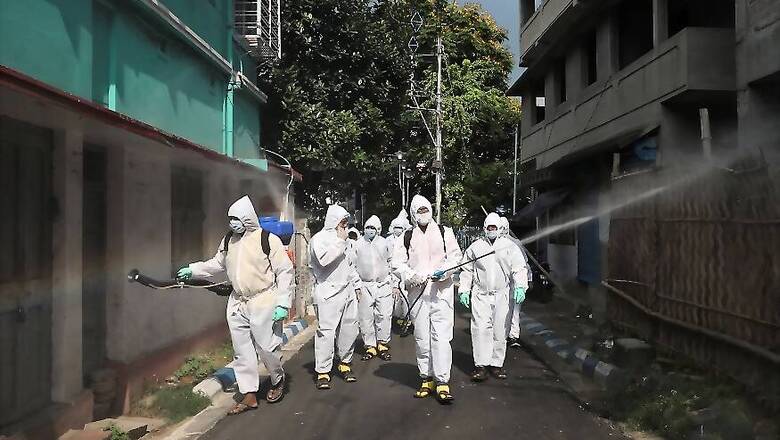
views
So far, our policy response to the Covid-19 outbreak has been based on the principle of ‘safe living’, with precedence on the health and well-being of people. Safe living has been accorded high priority, along with the principle of sustainable development for a ‘safe future’.
In other words, a new thinking, that of ‘Sustainable Development Plus’—with a focus on safe living, now and in the future—has emerged. Citizens’ support for the same is obvious as the nationwide lockdown applied by the government was generally accepted as a wise and timely decision to curb the spread of the novel coronavirus.
Due to the highly contagious nature of the disease, people have been left with no option but to stay at home and take multiple precautions at a personal level. From disinfecting every single material brought for daily consumption to avoiding social interactions, the situation has been quite stressful.
We are facing an extraordinarily tough situation that has compelled us to think how to manage nature and its resources differently to avoid pandemics like Covid-19. At a time like this, it is imperative to revisit the established principle of sustainability.
The emerging ideas for managing nature post Covid-19 take us towards ‘Sustainable Development Plus’ with ‘Safe Living” getting high priority in the core objectives of our development initiatives along-with ‘Safe Future’.
For the purpose of keeping focus on safe living leading to health security for the people, the principle of sustainable development needs to be strengthened adequately even by adding new management parameters. However, the critical question remains, ‘What needs to be prioritized or added to the existing principle of sustainable development?’
First, we must have a high-quality forest cover. In India, the national goal is to ensure that one-third of the total land area is under forest or tree cover. In addition, attention must also be paid on the quality of the trees. Bael, Nageswar, Neem, Amla and others that have medicinal value should be planted on a large scale to turn our forests into a reservoir of herbal medicines. In view of their utility for communities as well as the environment, forests with such trees would also attract people’s support for conservation.
Second, region-specific standards for a balanced relationship between humans, wild animals and nature need to be established scientifically and be thus maintained.
Third, an integrated farming system—cultivation of spices, medicinal plants, agricultural and horticultural crops, dairy, and other agriculture-related activities on the farm itself—is a better option for healthy living. Consumption of organically grown fresh fruits, vegetables and milk as well as ayurvedic herbs and spices make our immune systems stronger to fight diseases.
Fourth, smart cities and villages need to be planned differently with the construction of houses as per our traditional system of architecture, vastu shastra. A house constructed as per proper planning, facilitates better natural ventilation and more entry of sunlight inside the living areas, thereby maintaining a healthy environment for the entire family.
Fifth, focus needs to be on restricting development at a site to its scientifically assessed carrying capacity.
Sixth, scientific research needs to be strengthened to develop mechanisms for prediction of a disease outbreak. That would help in making advance preparations to fight the disease and save lives.
Seventh, a protocol for adoption of learning from our age-old traditions and practices for safe living should be suitably developed.
Eighth, technology-based interventions need to be applied for maintaining pure air and clean water, much required for healthy living. Furthermore, institutional arrangements at the national and regional levels are required to be put in place for effective implementation of the planned strategies for safe living, now and in the future.
More focus areas can be finalized based on further research. It is certain that all endeavours focusing on ‘safe living: now and in the future’ would get citizens’ support. In totality, strengthened scientific research, effective technological applications and a pro-active citizenry would be the three key pillars of ‘Sustainable Development Plus’.
To finalize the roadmap for its application to manage nature and its resources for safe living, consultation with experts and stakeholders needs to be initiated. That would be the beginning for setting in motion a new development principle for a new future.



















Comments
0 comment